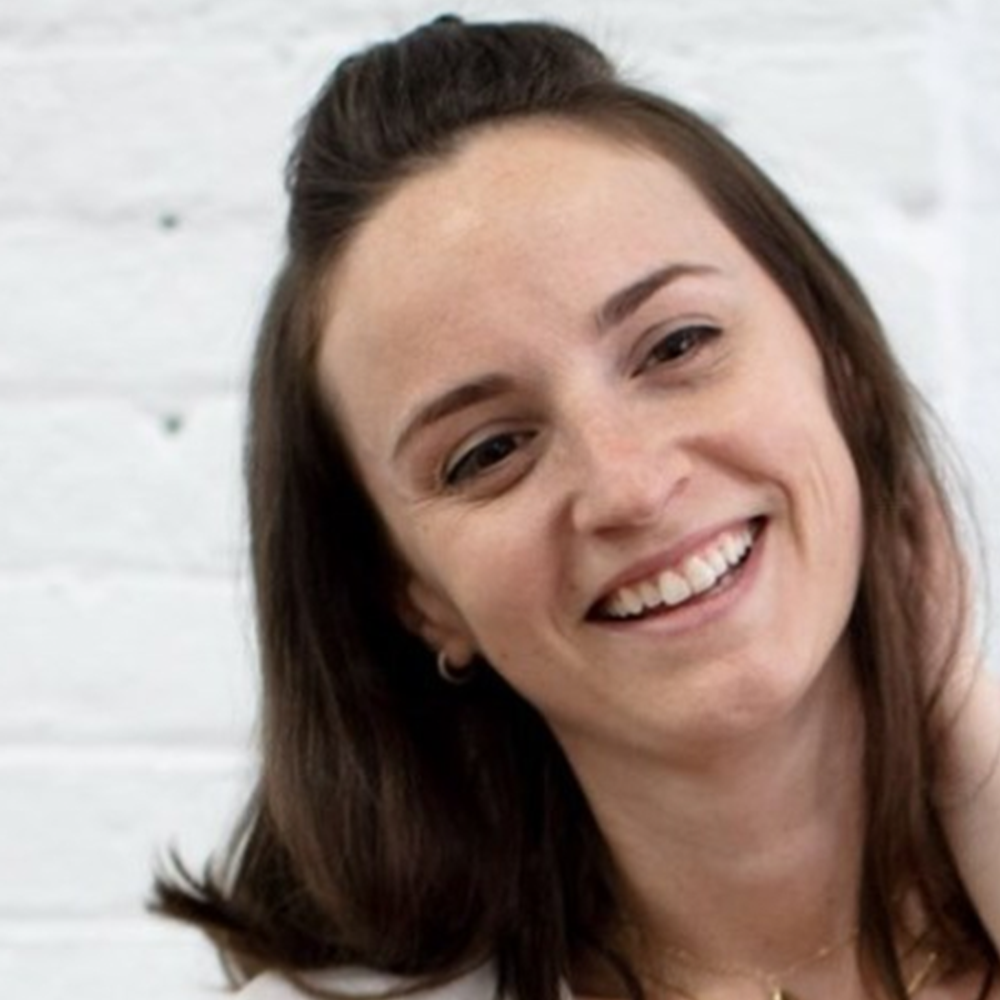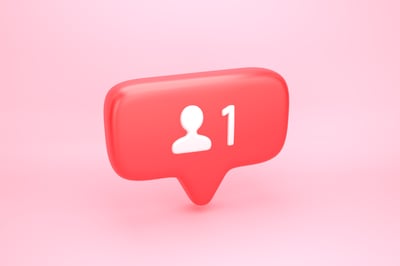If you've ever seen an influencer's perfectly curated Instagram feed come across your app, you know that there's a lot more than cool clothes and an artfully arranged tabletop that draws in the followers.
The key is Instagram hashtags.
And the good news is that brands everywhere have been fine tuning their Instagram hashtag strategies over the years. We talked to 12 Instagram marketing leaders who have experienced success with these strategies.
There's more to Instagram hashtags than meets the eye. Let's learn!
“The best way to find hashtags for your brand is to identify leaders in your niche/industry then check their pages to find the hashtags they use. Write those down and click on those hashtags. If the people who are using that hashtag post content related to your niche it's a hot hashtag. If it has over 10,000 uses and less than 1 million uses it's even hotter. Anything under 10K is not that popular yet and everything over one million is sometimes saturated and/or spammy. Make sure people have been posting to that hashtag recently. If it hasn't been used in a few weeks, it's a dead hashtag.
Take a look at the top posts for the hashtag. If there is someone posting there who has a great following/content, see what hashtags they are using and start again from the beginning. Continue doing this until you have about 60-90 hashtags so you can rotate them out every so often until you find the set that works best for you and your engagement. You can post a max of 30 hashtags per post. I recommend doing hashtag research once a quarter or if you see engagement dropping.
The most common mistake when using hashtags is using dead/irrelevant hashtags or using hashtags when your page is private because no one will see them. I’ve found that the Planoly app is very helpful when storing hashtags.” - Alexis Davis, The Content Plug
“On Instagram, there's a 30 hashtag max limit so a way to pick your hashtags would be to find 10 really big hashtags in your industry to target and then find 10-20 really specific and niche hashtags with low to medium competition to post in. You can use Instagram itself to find good hashtags to use by just typing in an industry keyword you want to post in. You can also see what other hashtags pages in your industry are posting in and take the ones you like.
With constant tweaking and improvement, our hashtag strategy has been pretty solid for the most part. Our posts show up longer in the top of the tags we target and thus gain more eyes. Going after only the huge broad hashtags like #business or #food. A good strategy involves mixing in short broad tags with long niche tags. I’ve found that Allhashtag and RiteTag are good sites to use to do hashtag research because of the in-depth analytics on the competition and value of a hashtag.” - Gennady Litvin, Moshes Law Firm
|
TIP: Track the performance of hashtags for your brand with with hashtag monitoring software. |
Think audience first when brainstorming keywords
"Hashtags can be a very effective way to grow your Instagram presence. However, there are many misconceptions about hashtags and how to use them properly. There are two common mistakes that I see on Instagram. The first is using too few hashtags. You are allowed to use up to 30 hashtags, and the more you use, the larger your reach is. The second is using hashtags that are too popular. If, for example, you use the hashtag #fun, you are competing with 319 million other posts. So many users are using that hashtag, so your post has a very small chance of being seen. Aim for hashtags with no more than 250,000 posts. This allows you to stay in the “recent” category longer, giving you more potential exposure.
As your account grows, you can start using larger hashtags. When researching hashtags, begin by writing down keywords that your target audience is likely searching. Then type that keyword into the hashtag search area on Instagram and you’ll see a whole list of hashtags with that word in it. Click through and check the number of posts and check the top posts. Are the posts in this hashtag similar to yours? Then that’s a good hashtag for you to be using. Once you’re viewing a hashtag on Instagram, Instagram will likely give you related hashtags above the posts. These hashtags are good ones to check out and potentially add to your list as well.
If you have a business Instagram account, you can click “insights” under your post to see exactly how many of your posts impressions came from hashtags. For my business account, I like to use the app SmartHash. It split-tests your Instagram hashtags and shows you which Instagram hashtags are working well for you and which hashtags are not.” - Katie Mander, Girl Crush Collective
“We'll typically have a few standard hashtags used for most posts we make for the brand we're working with, but then we get deep into custom hashtags based on the style of the image, the content in the image, and the demographics we want the image to reach. We'll usually search 2 or 3 obvious and popular hashtags that fit each of those 3 categories, and see what other hashtags had been used for those posts as well.
There really is no need to reinvent the wheel when it comes to hashtags, so we see continued success by finding these key hashtags and then adding complimentary ones that seem to get used by other people alongside the original key hashtags.
One of the most common mistakes I see is people hashtagging every word that describes the content of the post. Stick to two or three key and unique hashtags about the image, and then add on secondary, more niche hashtags that compliment the image instead of describing it.” - Aly MacGregor, Reicura
“It’s quite simple to find Instagram hashtags, as they have a robust, built-in auto fill display that shows how popular a particular hashtag is once you start typing the # and some letters after it. You can see whether the singular or plural version of a word is more popular (why not use both?) The main thing to consider is that you should be adding hashtags that are on point for that particular post. Think of these hashtags the same way you might look at keywords that you're targeting in a blog post.
The most common mistake I see is brands using un-targeted irrelevant broad hashtags because they think it will add more exposure to their post. For example, if you're posting about a new application and you include hashtags like #love or #best it not only shows that you're not savvy to how this social channel works, it could also irritate Instagram users who are following that tag looking for posts about #love.
By all means, be generous with your hashtag use. We've been known to use the full 30 tag allotment if we can find relevant ones that will enhance the exposure of the post in a legitimate way. But don't feel that the more tags you use the better your post will do. It's about accuracy and keywords, not quantity.” - Jason Myers, The Content Factory
Post your Instagram hashtag cloud in the first comment
“Our Instagram hashtag strategy is pretty simple. We researched 25 good hashtags for our industry and what we normally post about and save them all in a note on a phone. When we post something, we first write a description then we post.
As the first comment, we paste those 25 hashtags and then add up to 5 more that are more specific to that post. That gets us a general reach for our main topics and then more specific for that post. Posting the hashtags in the first comment keeps the description cleaner and has the same effect.” - Nick Leffler, Exprance
Ultimately, be patient and give your strategy time to work
“We always advise our clients that hashtags are all about trial and error. It is good to experiment with different types of hashtags and measure which ones are generating the most engagement. For example, we have noticed that appealing to a mix of #smallbiz and #ladypreneurs works best for our content. Test out different categories and compare how many likes/comments those posts get.
The most common mistake we see when it comes to hashtags is people choosing ones that are far too broad. It may seem like a good idea to include major trending hashtags on your posts, but in reality, they are usually too saturated. It will be hard for someone to find your post tagged #travel when over 300 million other posts are using that as well.” - Nicole Gilmore, Kicksta
"There are a couple tools you can use to determine which hashtags are the best for your content.. I personally like Hashtagify. You choose a main hashtag that applies to your content and then it offers related hashtags. It's best to share 10+ hashtags on Instagram and choose ones that are a range of popularity, so really high volume hashtags and a few low volume ones so your content can be shared in a high traffic hashtag, in addition to catching a few more niche audiences." - Katie Campbell, Fundera
Check out the competition
"The biggest resource we use to compile hashtags is Instagram itself. Once we type a hashtag into the search bar (i.e. #marketing), Instagram will tell you how many other posts include said hashtag and provide a list of related hashtags within the same terminology (i.e. #marketingdigital, #marketingtips).
While avoiding common mistakes such as incorrect spellings, another strategy our team uses to find new hashtags is visiting popular accounts in our industry to see which hashtags they're using on their posts. In some cases, the hashtags they’re including are ones that we weren't before that we can add to our repertoire." - Taylor Hosey, Sixth City Marketing
Start with a brainstorm, then fill in the blanks with keyword research
"Many of the hashtags we use for our clients are found through our team’s time spent in the channel monitoring trends and activity. Others are found through brainstorms, in which case, each hashtag is searched in Instagram to see both how popular it is, as well as how it’s used (i.e. is there some unexpected and/or indecent interpretation).
We have seen our Instagram hashtag strategy lead to more engagement (both likes and comments) as well as increases in follower counts for clients in different categories from retail, to tourism, to healthcare.
For Olay’s Instagram, our hashtag strategy (as well as content creation) led to posts which earned 68% more likes than brand-created content and 90% more likes than influencer content. Our content and hashtag strategy for Olay resulted in the top six most-liked organic posts for the client. Here’s a full case study for more!" - Derek Roessler, Ignite Social Media
Brand your Instagram hashtags as you would your actual brand
“When we did a brand refresh, we looked at Instagram accounts of people who would fit with our target demographic to determine what types of hashtags they used (if any). Looking at competitors' accounts can also help you understand how the industry is using hashtags and if there are any that could apply to your brand or help you get in front of the right eyes. We attempted to find one unique hashtag that is easy to remember so when our audience mentions us, they think of our hashtag, too.
We have three main hashtags. Our hashtag strategy for Sunglass Warehouse is a part of our brand identity and is even our brand's tagline. It appears on our boxes, package inserts, all Instagram posts, etc. What's unique about it is that each of them stands alone without needing much explanation. #spendless #domore #getoutthere” - Elizabeth Kuka, Sunglass Warehouse
Follow the recurring usage patterns from brands and influencers
“Hashtags can be easily tracked for popularity, just as individuals can. In fact, many influential posters rely on the same hashtags, so you can also track down those you want to be associated with via their hashtags.
There are online tools available (for all platforms, not just Instagram) that help you find new hashtags, and track your current hashtags. In addition to showing important hashtag data, these tools helps you find the best possible hashtags for your text and images. I personally use RiteTag.” - Steve James, smallbizbigbiz

Join our network of expert contributors and share your insights on social media, marketing, and business growth with over 1 million readers on the G2 Learning Hub.
Amy Lecza (she/her) is the former director of content marketing at G2. Her background is in journalism, PR, and content creation, and she has a degree in both journalism and culinary arts.
In our current social media era, influencer marketing is more prevalent than ever.
 by Alexa Drake
by Alexa Drake
Instagram isn’t the new cool kid on the market anymore. Arguably, it’s more of an eternal...
 by Sagar Joshi
by Sagar Joshi
Instagram has become a social media giant.
 by Lizzie Kardon
by Lizzie Kardon
In our current social media era, influencer marketing is more prevalent than ever.
 by Alexa Drake
by Alexa Drake
Instagram isn’t the new cool kid on the market anymore. Arguably, it’s more of an eternal...
 by Sagar Joshi
by Sagar Joshi


